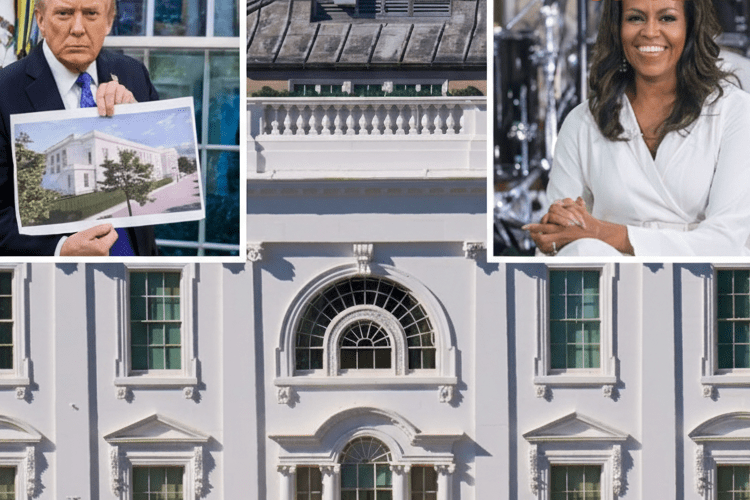Trump Hits Back at Michelle Obama After She Slams His White House Renovation Plans — “It’ll Be One of the Greatest in the World”
President Donald Trump has responded sharply to former First Lady Michelle Obama’s criticism of his ambitious White House renovation plans, defending his vision for what he describes as “one of the greatest ballrooms in the world.” In a spirited interview with Laura Ingraham, the former president took direct aim at Obama’s remarks, which labeled the East Wing reconstruction project a “disaster” and an unnecessary “ego-driven vanity project.” Trump, never one to back away from a challenge, countered that his renovations are not just about aesthetics — but legacy, symbolism, and American excellence.
The clash between the two high-profile figures — both powerful, both cultural icons in their own right — has reignited an old rivalry that transcends politics and delves into image, influence, and the ongoing fight over who defines the modern legacy of the White House. Michelle Obama, known for her advocacy of history, preservation, and tradition during her years in Washington, reportedly expressed disappointment that parts of the East Wing, including offices and ceremonial rooms established during the Kennedy and Obama eras, were being replaced. “There’s history in those walls,” she allegedly remarked in a recent interview, calling the renovations “a reflection of self-importance rather than service.”

Trump’s response was characteristically defiant — and grand. “Michelle Obama can say whatever she wants,” he told Ingraham, holding up architectural renderings of the new ballroom and exterior redesign. “But this will be one of the greatest ballrooms in the world — something America deserves. We’re not tearing history down. We’re building something that will last a century.”
The president’s proposed redesign reportedly includes a new East Wing expansion featuring a 2000-person capacity ballroom, a marble atrium connecting to the Rose Garden, and updated security infrastructure designed to meet 21st-century requirements. White House insiders have described it as the largest renovation since Truman’s postwar reconstruction in the late 1940s. Critics, however, have called the scale of the project “unnecessary,” claiming it erases important architectural details and diminishes the East Wing’s historic charm.
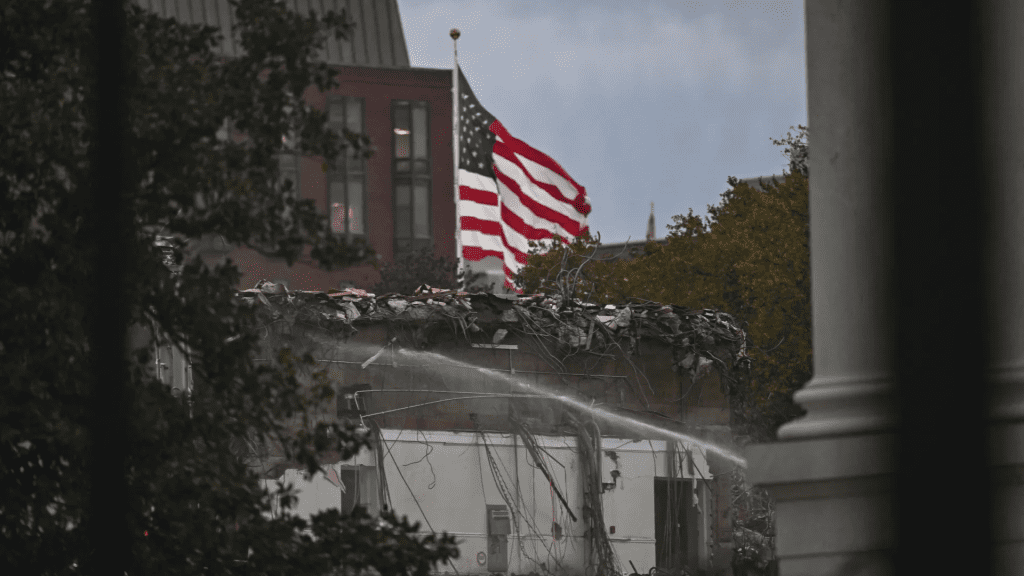
Trump’s supporters, on the other hand, see it differently. To them, this is a restoration of American pride — a bold declaration that the seat of U.S. power should reflect confidence, modernity, and strength. The ballroom, as Trump envisions it, will serve as a venue for state dinners, global summits, and patriotic events — all with a sense of grandeur that he says “puts America first in design and beauty.”

In his interview, Trump hinted that the criticism from Michelle Obama and others comes from jealousy more than concern. “You know, they had their time,” he said, his tone equal parts charm and defiance. “They didn’t do much — a few paintings, a vegetable garden, some furniture upgrades. We’re doing something that future presidents will thank us for. People are going to walk in and say, ‘This is incredible.’”
The friction between the two figures is hardly new. Michelle Obama has long been one of Trump’s most vocal critics, often challenging his rhetoric and policies, while Trump has not hesitated to dismiss her influence as “overhyped by the media.” Their differences have become symbolic of America’s divided political and cultural landscape — a former first lady who champions empathy, tradition, and inclusivity versus a former president who prioritizes power, symbolism, and scale.
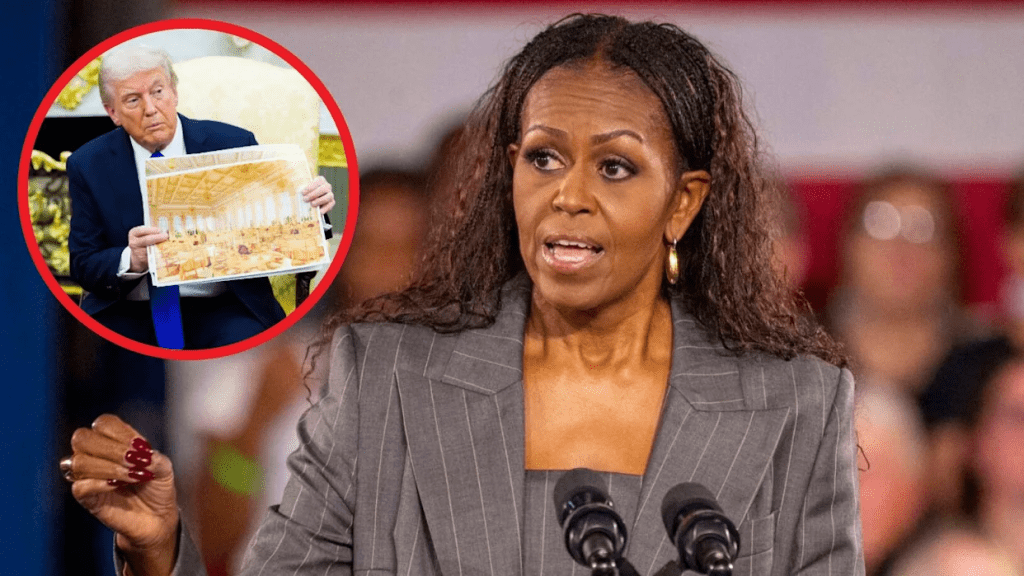
Political analysts have described this latest exchange as an extension of that divide. “This isn’t about architecture,” said one Washington historian. “This is about legacy. It’s about who defines the American presidency — the compassionate, grounded image represented by Michelle Obama or the unapologetically bold and assertive vision represented by Donald Trump.”
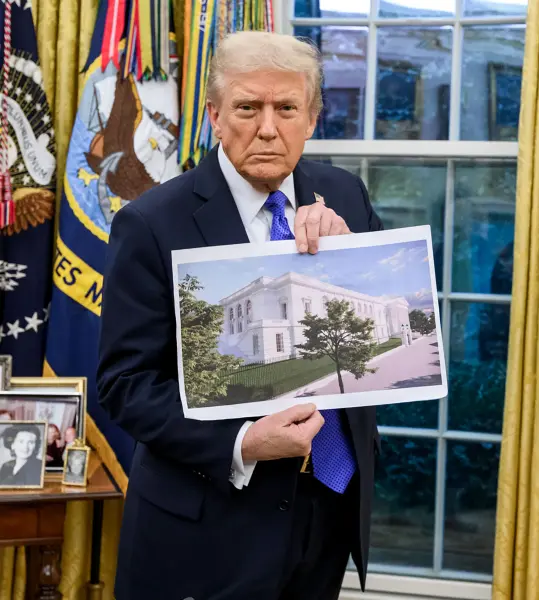
The White House renovation itself has been a subject of intense discussion for months. Approved in early 2025, the project is being privately funded through a combination of federal maintenance allocations and anonymous donor contributions. Trump, known for his meticulous attention to aesthetics and his passion for real estate design, has been deeply involved in the process. Reports suggest he personally reviewed flooring samples, chandeliers, and lighting layouts — much as he did with his properties before entering politics.
Michelle Obama’s criticism, therefore, hit a nerve. Sources close to Trump say he sees the renovation not just as a matter of function, but as part of his enduring mark on the country’s most recognizable building. One aide said, “He wants something that reflects his era — big, elegant, and strong. He thinks the White House should look like a global symbol of power, not a museum.”
In that same interview, Trump also took the opportunity to draw a broader contrast between his administration and the Obamas’. “We rebuilt the economy, we rebuilt the military, and now we’re rebuilding the White House,” he said. “We’re doing things they could never imagine doing — and that’s why they’re upset.”

Public reaction to the exchange has been predictably polarized. Supporters of Trump hailed his remarks as a defense of progress and American pride. “The White House needs to evolve, not stay frozen in time,” one commenter wrote online. “If anyone can turn it into a masterpiece, it’s Trump.” Detractors, however, accused him of trying to rewrite history through excess. “He’s treating the White House like another luxury resort,” one political commentator claimed. “The East Wing is a piece of national history, not a stage set for self-promotion.”
Even among neutral observers, there’s acknowledgment that Trump’s plans are ambitious. The ballroom’s design — inspired by classic neoclassical architecture fused with modern elements — aims to reflect both tradition and innovation. The renderings show towering windows, polished stone floors, and a grand staircase leading into the main hall. A skylight dome, modeled after European palatial designs, would flood the room with natural light during the day and be illuminated by chandeliers at night.
Critics say the design overshadows the White House’s historic character, but Trump insists it will only enhance it. “We’re not changing what the White House means,” he said. “We’re making it more beautiful, more functional, more American.”
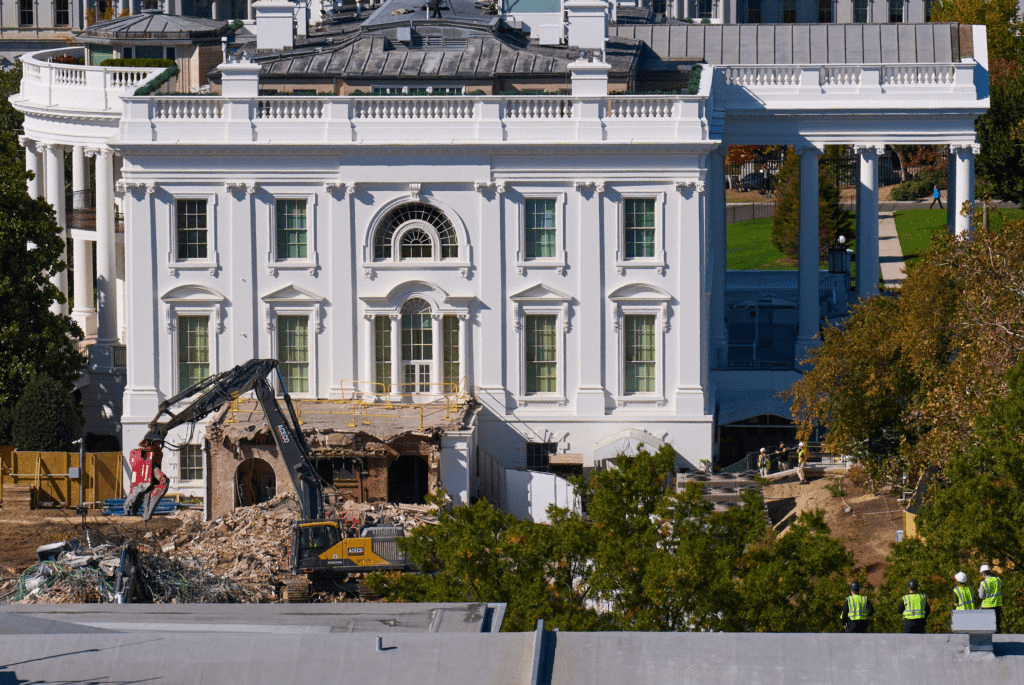
Michelle Obama has not yet issued a follow-up response, though her previous comments indicate deep disapproval. During her years as First Lady, she championed the “People’s House” concept — ensuring the White House reflected everyday Americans and honored its historical roots. Her viewpoint aligns with architectural preservationists who believe the East Wing represents more than office space; it stands as a symbol of the First Lady’s influence and the human side of presidential power.
Meanwhile, conservative commentators have rallied behind Trump, framing the controversy as yet another example of “elite outrage” over his unapologetic approach to leadership. On social media, hashtags like #BallroomGate and #TrumpRenovation began trending, with right-leaning voices praising his vision for modernization while progressives condemned it as excessive.

For Trump, however, the noise only adds to his narrative — the builder, the fighter, the visionary who refuses to play by Washington’s rules. “I’m doing this for the American people,” he told Ingraham. “This isn’t about politics. It’s about pride. When world leaders come here, they should walk in and say, ‘This is the most magnificent building in the world.’ And they will.”
In that single statement lies the essence of Trump’s enduring political persona — one that blends ambition with spectacle, controversy with conviction. To his supporters, it’s a mark of leadership. To his critics, it’s another example of showmanship. But either way, it’s vintage Trump: headline-grabbing, unapologetically bold, and impossible to ignore.
